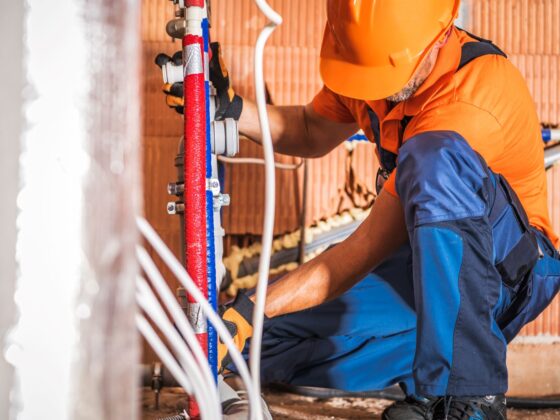As the Internet of Things (IoT) continues to expand and become an ever-present part of our everyday lives, so too do the potential security risks associated with these devices. From smart thermostats in homes to data networks in businesses, IoT technology is becoming increasingly vulnerable to attack.
This article will explore some of the key security risks posed by IoT devices, as well as provide helpful tips on how you can protect your home and business from malicious threats. With a better understanding of what’s at stake and simple steps you can take for prevention, you’ll be able to ensure that your home and business remain secure against any potential attacks stemming from connected device vulnerabilities.
Identifying Common Smart Device Vulnerabilities
Smart device vulnerabilities are one of the most common security threats to both home and business networks. With an ever-expanding number of connected devices, malicious actors can exploit weaknesses in these systems. Identifying potential points of attack is essential for protecting your data and property from malicious actors. The first step in identifying common smart device vulnerabilities is understanding how they work. As with any system, weakness or misconfiguration can lead to a breach or disruption of service.
Knowing the specific features and software within each device helps identify potential entry points into a network that need to be protected against attackers. Additionally, understanding how different types of devices interact with each other allows administrators to create secure firewall rules that minimize risk when connecting multiple devices on a single network. Another factor to consider when analyzing smart device security is hardware limitations. Many manufacturers have built their products around weaker processors and memory configurations which limits their ability to run complex security protocols such as encryption algorithms or access control lists (ACLs).
This lack of processing power also impacts the capability of devices to respond quickly enough o sudden changes in traffic patterns; therefore it’s important for administrators to consider this while developing their overall IoT strategy. Finally, users should pay attention to patching schedules set forth by vendors as part of their ongoing maintenance efforts within larger organizations utilizing connected technologies. By staying up-to-date on new releases, IT staff can ensure that any known vulnerabilities have been addressed by applying patches promptly after release instead of waiting until an attack surfaces before taking action.
Taking proactive steps toward threat mitigation can save time and money down the road by reducing recovery costs associated with data breaches or outages caused by outdated versions of firmware running on vulnerable systems.
Securing Your Home Network Against IoT Threats

As the Internet of Things (IoT) continues to evolve, users need to understand the security risks associated with smart device usage and how to protect their home networks from potential threats. Securing your home network against IoT threats requires vigilance and an understanding of the various available technologies. One way to secure your home network is by making sure all connected devices have up-to-date software installed.
Keeping firmware versions current can help prevent hackers from exploiting known vulnerabilities or bugs in outdated versions. Additionally, installing a firewall on each device can help mitigate further attacks as well as using two-factor authentication whenever possible for added protection. Creating segmented networks within your home router settings can also be effective in blocking malicious traffic coming through public connections so you know exactly which devices are accessing private information on your local network.
Utilizing strong passwords across all connected devices will also make them more difficult to hack into while utilizing encryption protocols like HTTPS or TLS when applicable will keep data safe during transmission between these devices and external sources such as websites or mobile applications.
Finally, implementing VPNs when connecting remotely can further safeguard any sensitive data that may be transmitted over unprotected Wi-Fi networks while traveling outside of the house. By taking steps such as these, users can rest assured knowing they have taken proactive measures towards protecting their homes from malicious cyber-attack campaigns targeting vulnerable IoT systems both inside and outside of their residence walls.
Implementing Robust Data Encryption Measures for All Connected Gadgets
In the world of connected devices, data encryption is essential for protecting your home and business from potential cyber threats. To ensure the most robust security possible, implementing measures to secure all connected gadgets with strong encryption protocols should be a top priority. First, it’s important to make sure that any IoT device purchased includes an encrypted connection as part of its default setup – this means that users do not need to manually configure each device to protect their network.
Additionally, many companies offer additional levels of encryption protection on top of what comes standard with the product – opting for these higher-level protections can add an extra layer of security if available. Once the initial setup is complete, users should consider regularly changing passwords associated with their IoT devices or setting up two-factor authentication whenever possible. This makes it much harder for hackers to gain access even if they manage to guess one set of credentials. Furthermore, creating unique identities and passwords per device could also help reduce risk by ensuring that no single-point failure can compromise multiple systems at once.
Finally, some businesses may want to look into using virtual private networks (VPNs) when connecting their smart devices over public Wi-Fi networks such as those found in airports or coffee shops – this will effectively create a tunnel between the user’s computer and the remote server which encrypts all incoming and outgoing traffic before sending it through another layer of encryption provided by the VPN provider itself. Overall, there are plenty of ways in which individuals and organizations alike can safeguard themselves against potential risks posed by vulnerable connected gadgets; however, taking proactive steps toward properly configuring all devices with robust data encryption measures remains paramount among them all.
Considering Cloud-Based Solutions to Monitor and Manage IoT Devices
 With the rise of connected devices, cloud-based solutions are quickly becoming mainstream for users who want to monitor and manage their IoT devices. Whether youre looking to ensure your home network is secure or protect your business from potential threats, there are several options available that can help. Cloud-based monitoring and management services allow users to easily keep track of their device’s performance and security status over time.
With the rise of connected devices, cloud-based solutions are quickly becoming mainstream for users who want to monitor and manage their IoT devices. Whether youre looking to ensure your home network is secure or protect your business from potential threats, there are several options available that can help. Cloud-based monitoring and management services allow users to easily keep track of their device’s performance and security status over time.
These services can detect anomalies in data patterns, provide real-time alerts when suspicious activity is detected, as well as authorize access only to trusted users with specific permissions. Additionally, they offer a complete view of all your connected devices which helps identify malicious behavior faster than ever before. With these benefits in mind, cloud-based solutions are an ideal way for businesses and homeowners alike to stay ahead of any potential security risks associated with smart device usage.


